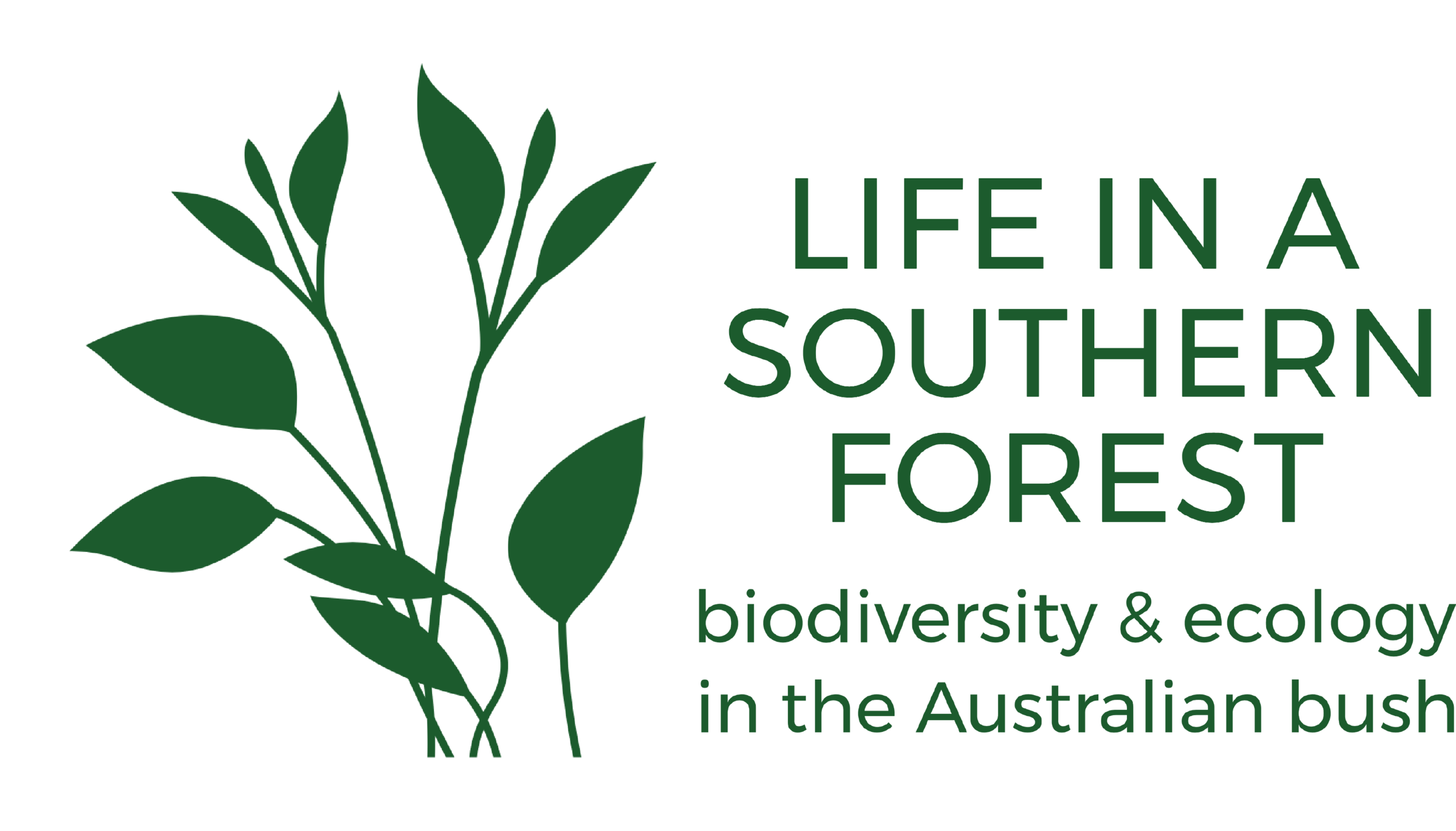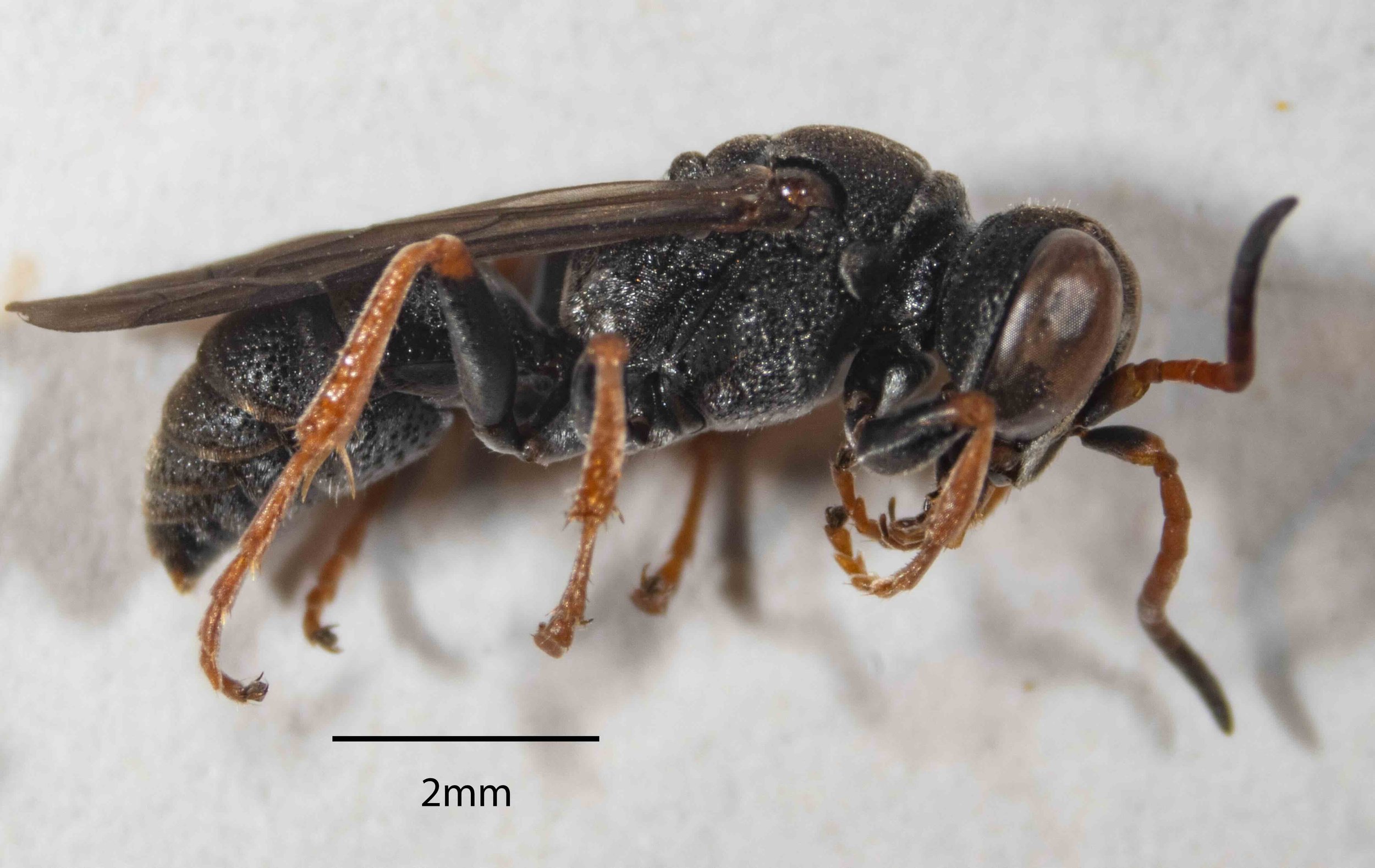
overall shape & size
Sphodrotes punctuosa males:
Differing from females in …
Smaller head-body length (8 – 10mm); longer antennae
Note also that, as in many crabronids, males have an additional flagellar segment (11, cf. 10 in females) and an additional visible segment in the gaster (7, cf. 6 in females).
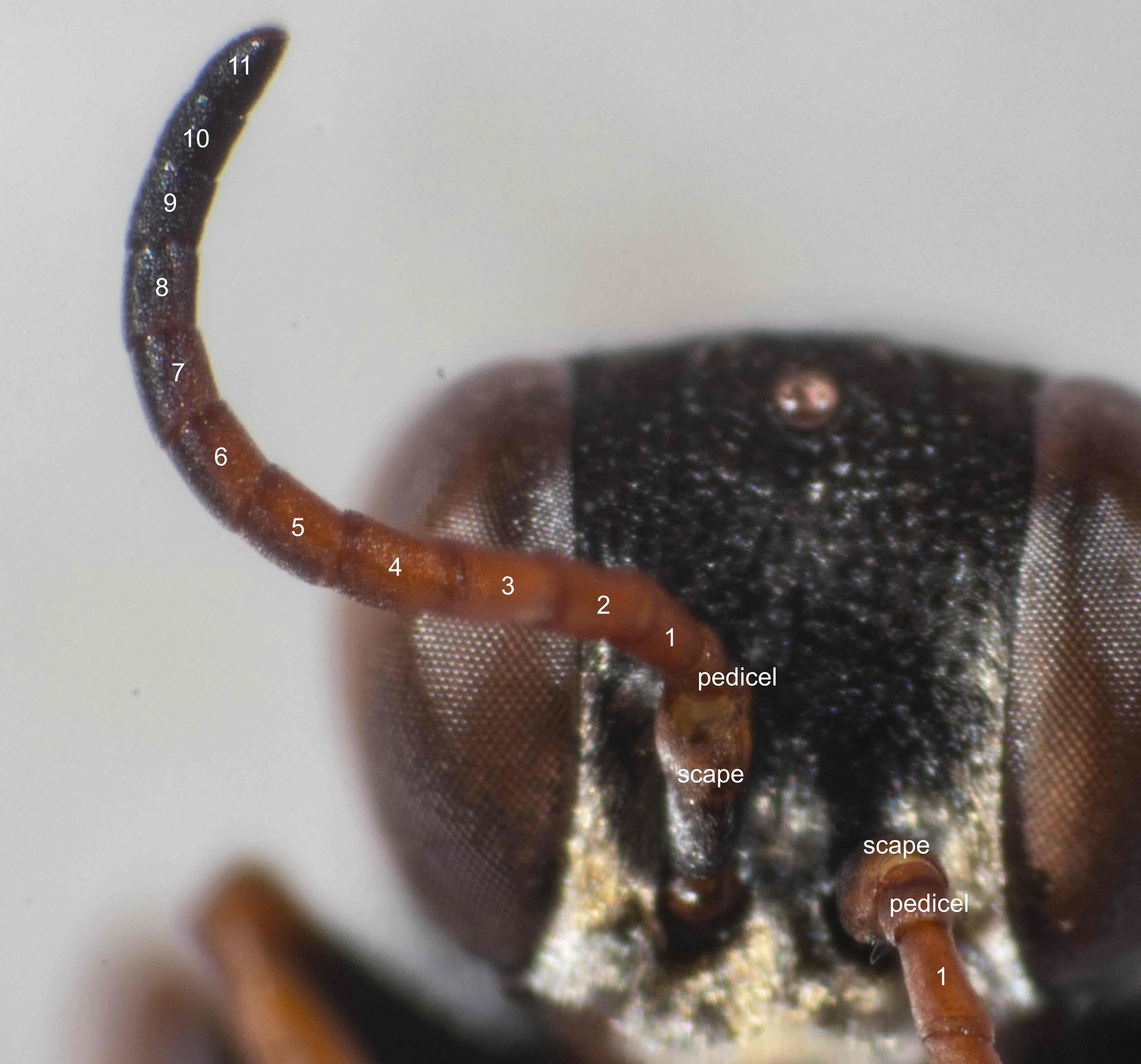
male antennae
As with nearly all members of the tribe Miscophini, male Sphodrotes have 11 antennal flagellomeres.
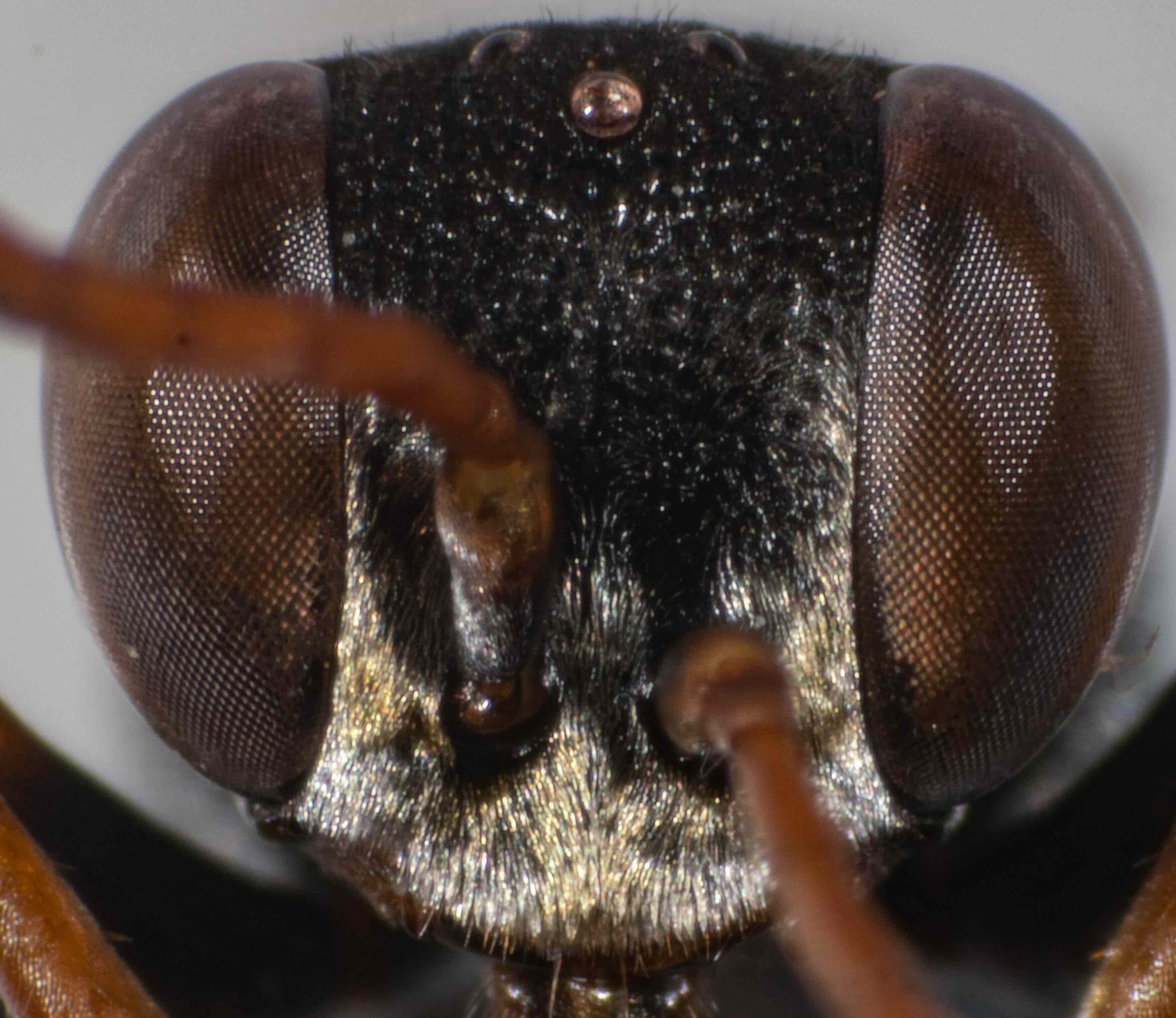
facial sculpture & pubescence
Sphodrotes punctuosa males:
Differing from females in …
“Punctation on frons much denser and stronger, interstices narrower, micropunctation finer. Frontal and clypeal pubescence much denser, brassy or slightly golden.”
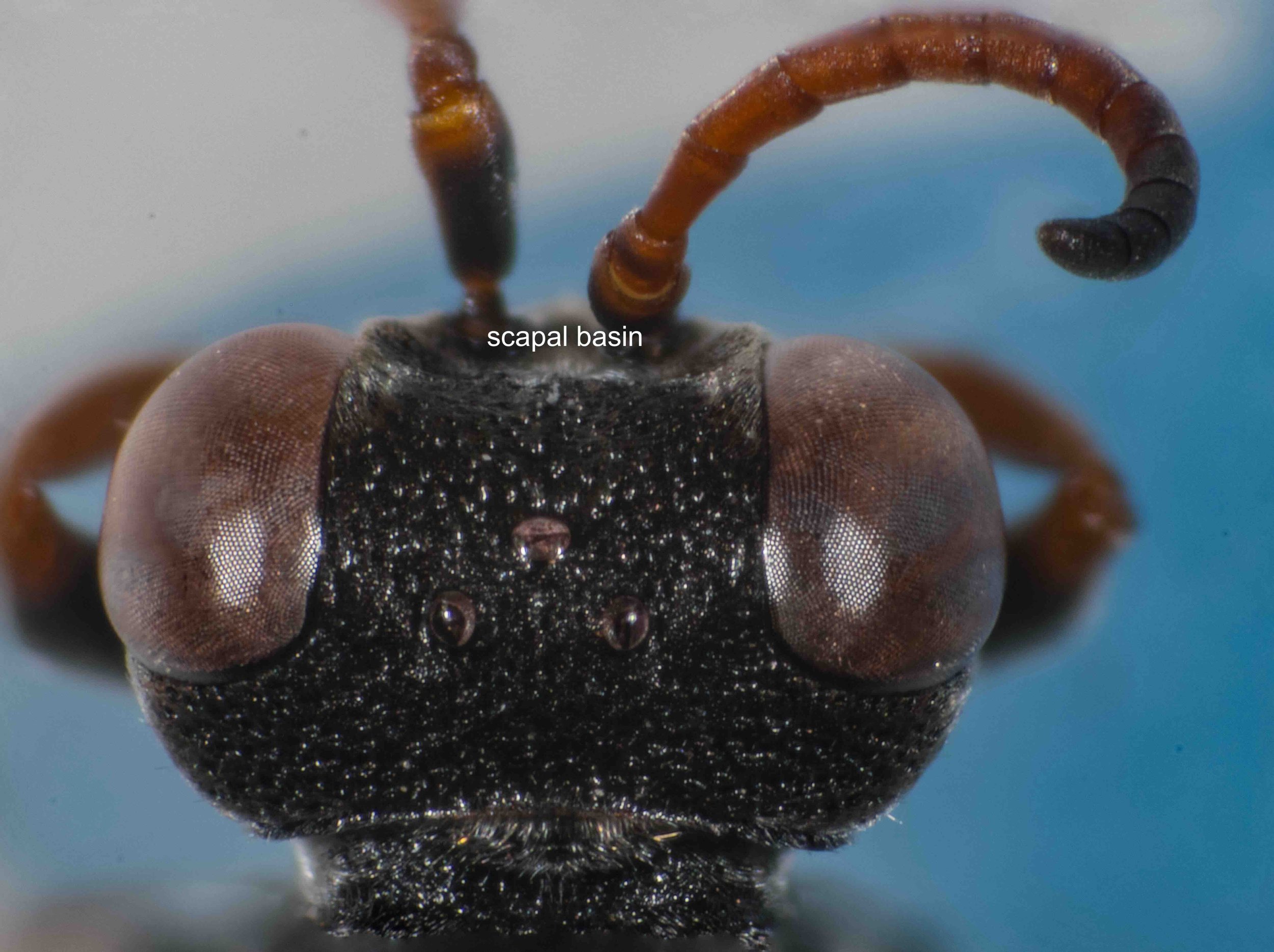
fovea & scapal basin; antennal colour
Sphodrotes punctuosa males:
Differing from females in …
“Facial foveae absent. Scapal basin deeper.” “Proximal flagellar segments light ferrugineous ventrally to quite light ferrugineous.”

thorax & propodeum
Sphodrotes punctuosa males:
Differing from females in …
“Thoracic, propodeal, and gastral sculture stronger and denser.”

thorax punctation
Sphodrotes punctuosa males:
Differing from females in …
“Thoracic, propodeal, and gastral sculture stronger and denser.”

first segment of gaster
Lomholdt makes no mention of male difference in the structure of SI.

gaster punctation
Sphodrotes punctuosa males:
Differing from females in …
"Thoracic, propodeal, and gastral sculture stronger and denser.”
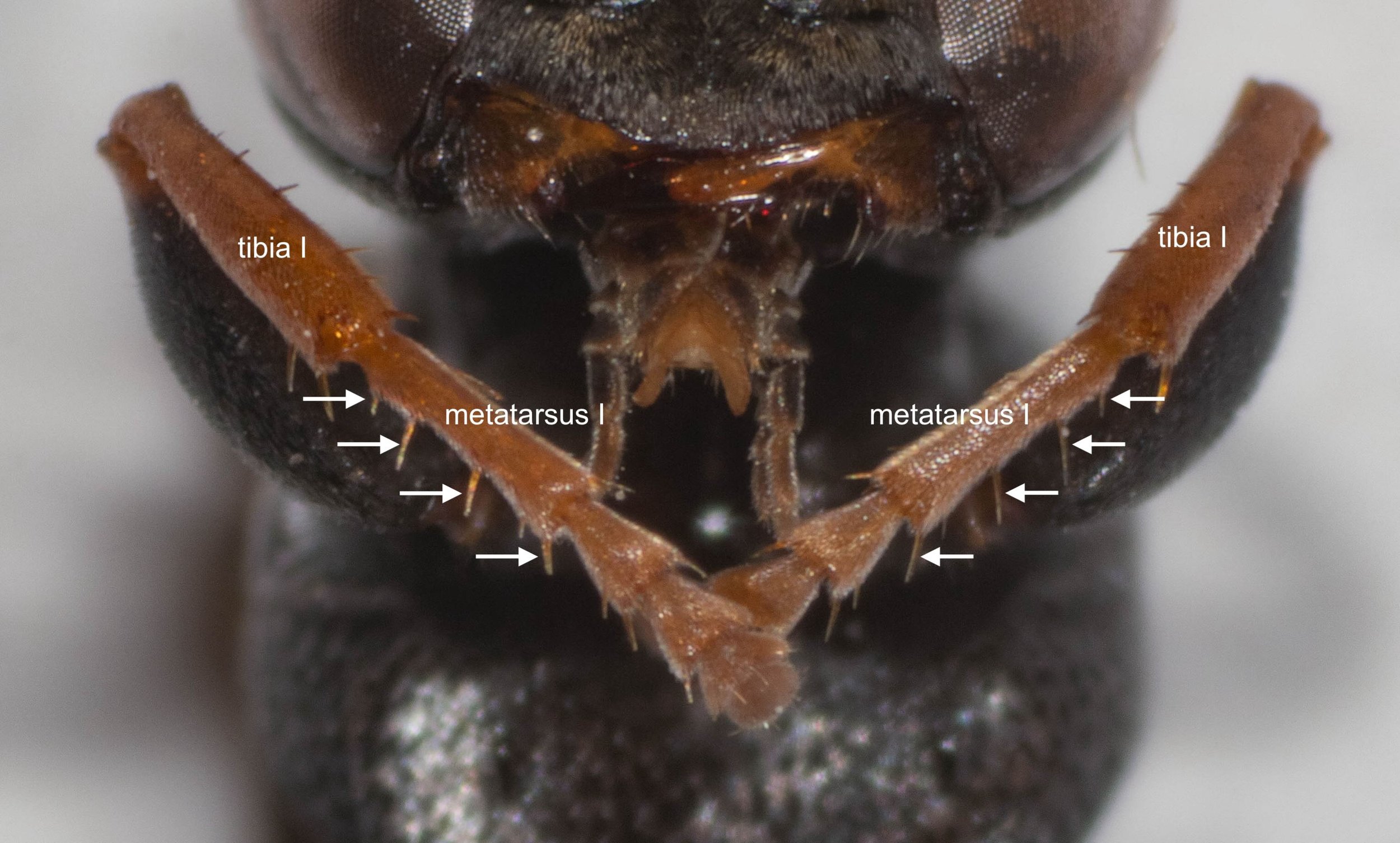
foreleg tarsal rake
Sphodrotes punctuosa males:
“Metatarsus I with 4-5 rake spines.”
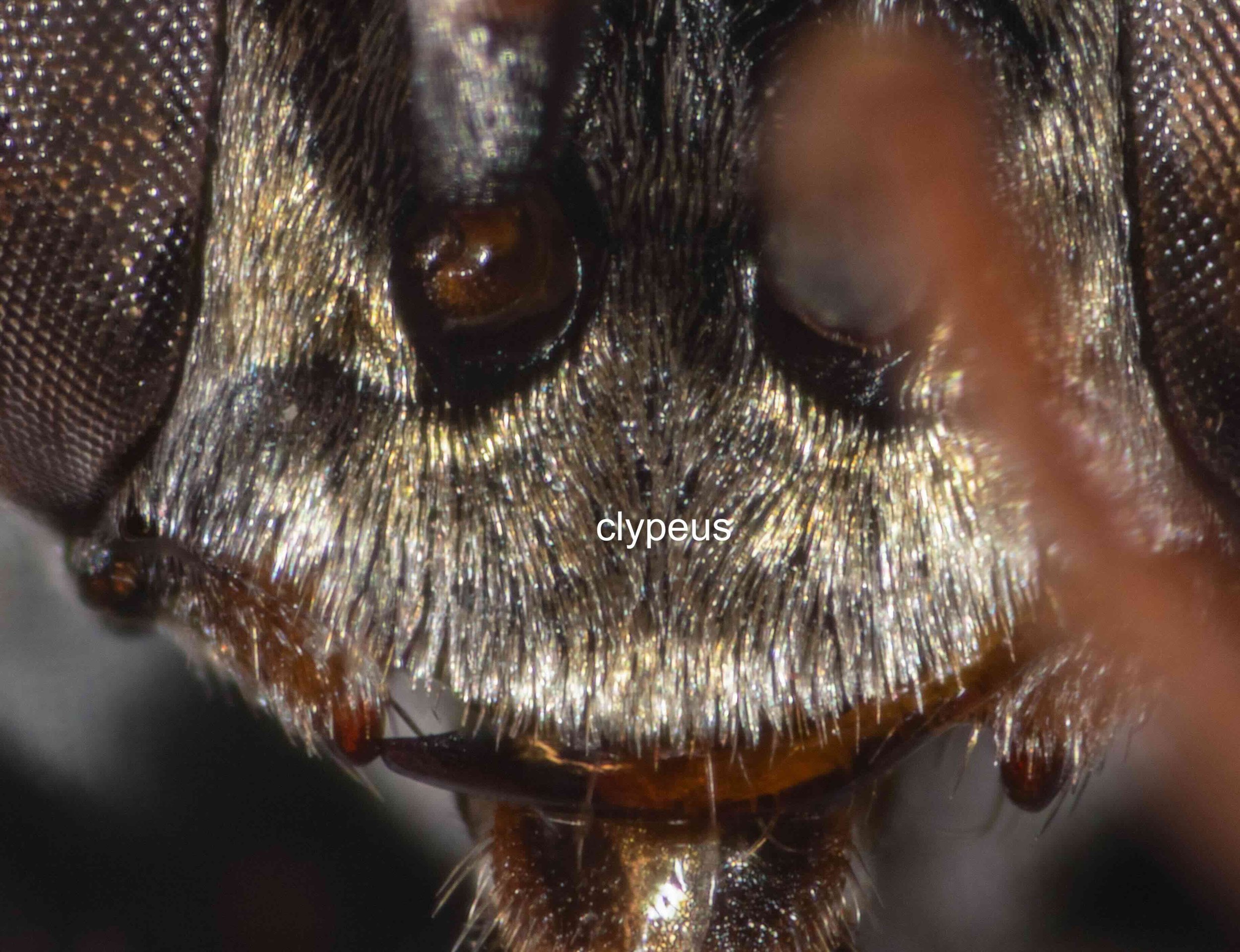
male clypeus (frontal view)
The dense pubescence conceals the apical rim of the clypeus when viewed face on.
[compare with Lomholdt’s Fig. 32]
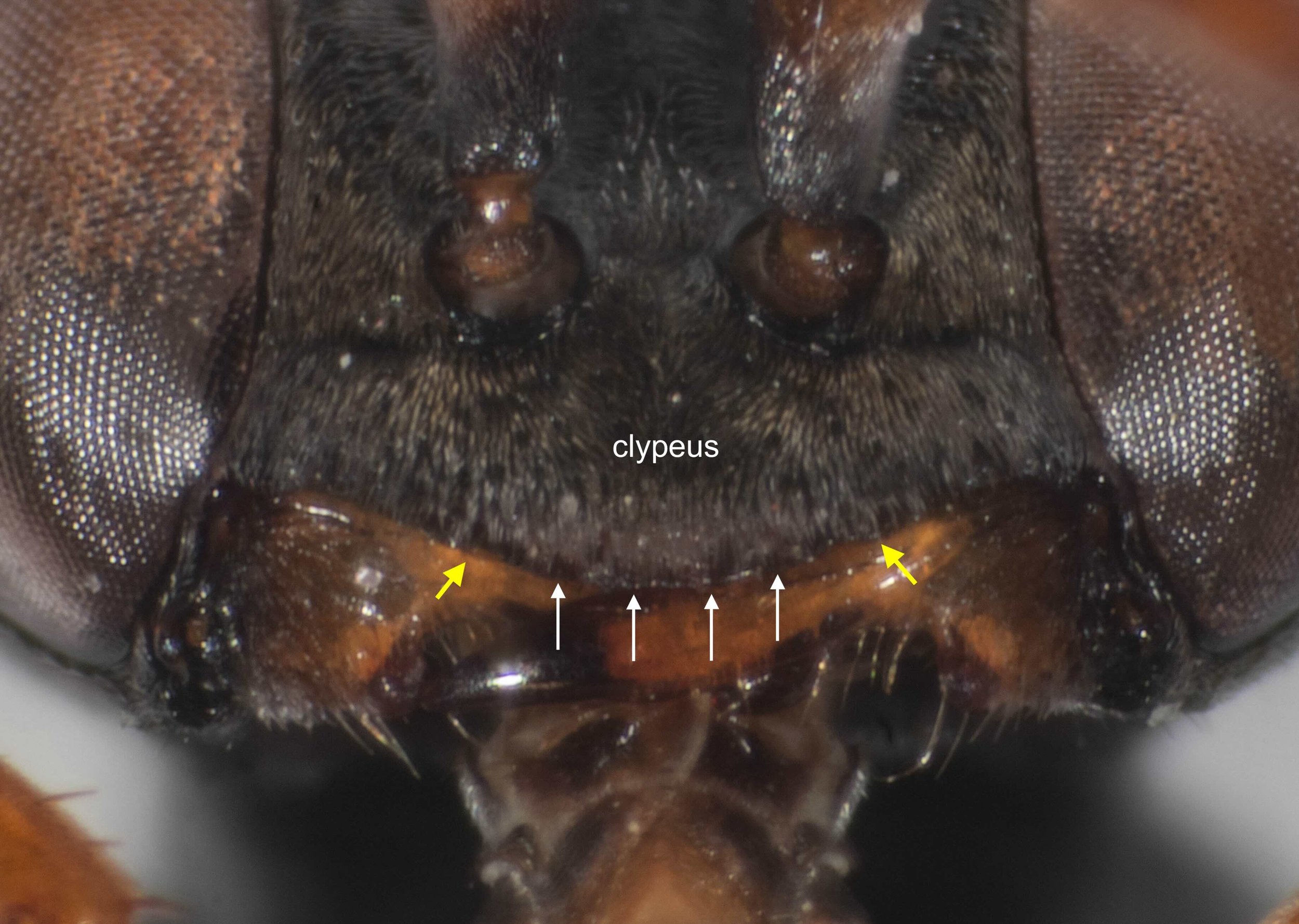
male clypeus (more ventral view)
The arrows indicate apical rim of the clypeus. There is a suggestion of a single, lateral tooth (thicker, yellow arrows), but it is not prominent as it is in the female.
[compare with Lomholdt’s Fig. 32]

Sphodrotes have:
- inner margins of eyes parallel, or slightly converging below
- a wide scapal basin (most)

Sphodrotes have:
- both recurrent veins (arrows) received by submarginal cell II (usually, with occasional exceptions)
Unlike many other wasps, Sphodrotes rarely display their wings in this way, so one has to be lucky to get field shots clearly showing forewing venation … making this a less useful feature for genus level ID.

Most of the Sphodrotes I see are males, either flying on patrol or perched on low vegetation.

They tend to pivot to and fro on the same perch, looking in all directions, before flying off again … and often returning to the same perch a short time later.

Makes life easy for the photographer!

Sphodrotes have:
- the mesopleuron sharply angled anteriorly (arrow)
That is, they look to have a square chest.

Sphodrotes have:
- integument strongly sculpted, and usually pitted
This coarsely sculptured integument is one of the most reliably visible clues to the genus.


















